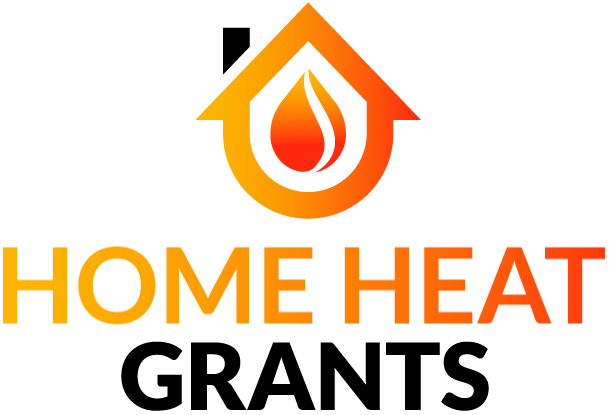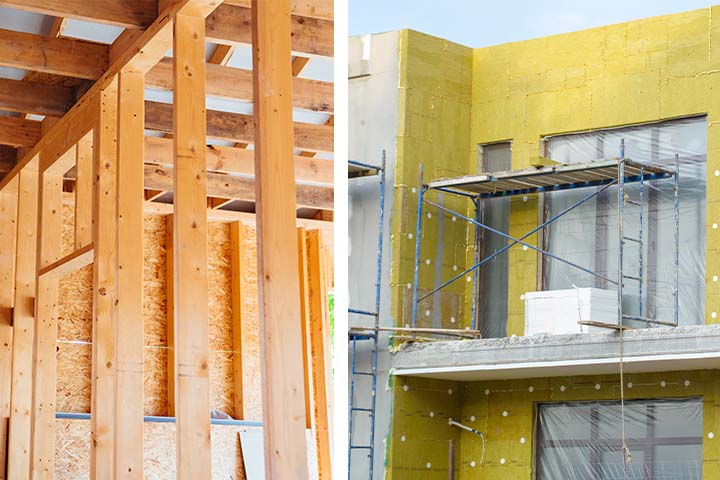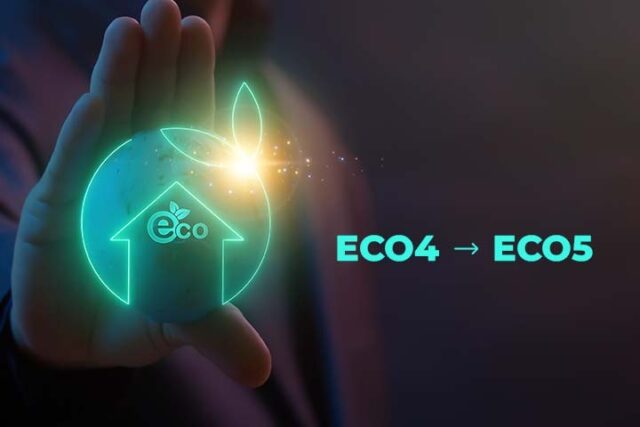Understanding the ECO4 Scheme
What is ECO4 and Why Does it Matter?
ECO4, or the Energy Company Obligation phase 4, is a UK government-backed initiative that encourages energy efficiency improvements in homes.
Launched as the latest update in the ECO series, it focuses on supporting low-income households and reducing carbon emissions.
By offering financial aid for insulation, heating upgrades, and renewable technologies, ECO4 plays a pivotal role in helping homeowners slash energy bills and improve living conditions.
Eligibility Criteria and Benefits for Homeowners
To qualify for ECO4, homeowners must meet specific criteria, such as receiving certain benefits or living in homes with poor energy performance ratings.
The scheme targets properties that fall into EPC bands D–G, aiming to uplift them to band C or better.
Eligible homeowners can receive free or heavily subsidized wall insulation, making it a no-brainer for those looking to cut costs and improve home comfort.
Basics of Wall Insulation
What is Wall Insulation?
Wall insulation refers to materials installed in or on your home’s walls to reduce heat loss. It acts like a thermal blanket, trapping warmth inside during winter and keeping it out during summer.
There are two primary types: internal and external wall insulation, each suited for different building styles and homeowner needs.
How it Improves Energy Efficiency
By minimizing heat transfer, wall insulation reduces the workload on your heating system. This means lower energy consumption and, consequently, cheaper bills.
Insulation also contributes to a more consistent indoor temperature, making your home more comfortable all year round.
Internal Wall Insulation Explained
How Internal Insulation Works
Internal wall insulation involves fitting insulating materials to the inner side of external walls. These materials, often rigid boards or stud walls filled with mineral wool or foam, are then covered with plasterboard and finished with paint or wallpaper.
Installation Process and Materials Used
Installing internal insulation typically includes:
- Removing fixtures and fittings
- Applying adhesive or building a stud frame
- Fitting insulation boards or batts
- Sealing joints to prevent air leaks
- Adding plasterboard and decorative finishes
Common materials used include polyurethane foam boards, mineral wool, and phenolic foam.
Advantages of Internal Wall Insulation
- Cost-effective: Generally cheaper than external options.
- No planning permission needed: Easier to implement in most areas.
- Improves thermal comfort: Immediately noticeable in cold months.
Limitations and Drawbacks
- Reduces room space: Can shrink the interior by a few centimeters.
- Disruption: Requires temporary removal of wall-mounted items and possibly redecoration.
- Thermal bridging risk: Cold spots may occur if not properly installed.
External Wall Insulation Explained
How External Insulation Works
External insulation involves fixing a layer of insulation material to the outside of the property, followed by a protective render or cladding. It essentially wraps the home in a thermally efficient coat, blocking heat loss before it escapes the wall.
Installation Process and Materials Used
This process typically includes:
- Cleaning and repairing existing walls
- Attaching insulation boards (e.g., expanded polystyrene or mineral wool)
- Applying mesh and basecoat
- Finishing with render, tiles, or brick slips
Advantages of External Wall Insulation
- Preserves interior space: No impact on room sizes.
- Enhances appearance: Opportunity to refresh or modernize the façade.
- Better thermal envelope: Covers cracks and improves airtightness.
Limitations and Drawbacks
- Higher cost: More expensive due to materials and labor.
- Requires planning permission: Especially in listed or heritage buildings.
- Disruption to external features: Drains, vents, and cables may need adjusting.
Key Differences Between Internal and External Wall Insulation
Cost Comparison
| Insulation Type | Average Cost (UK) | ECO4 Funding Potential |
|---|---|---|
| Internal | £4,000 – £7,000 | High |
| External | £8,000 – £15,000 | High (for eligible homes) |
Aesthetic and Structural Impact
- Internal: Invisible from outside; may affect wall space.
- External: Changes exterior look; can improve curb appeal.
Space Considerations and Lifestyle Disruption
- Internal: Can shrink rooms; more disruptive during install.
- External: Leaves interiors untouched; minimal indoor disruption.
Energy Efficiency Outcomes
Suitability for Different Property Types
Solid Wall vs Cavity Wall Homes
- Solid walls benefit most from insulation, as they lack natural barriers to heat loss.
- Cavity walls may be better suited for internal insulation if cavity fill isn’t possible.
Heritage and Listed Buildings
External insulation often isn’t allowed. Internal insulation is typically the only viable option, albeit with careful planning to preserve aesthetics.
Flats and Terraced Houses
Internal insulation is often easier for flats or mid-terrace homes where external modifications aren’t practical.
Costs and Financial Incentives Under ECO4
Funding Available Through ECO4
One of the standout features of the ECO4 scheme is its ability to significantly reduce the cost of installing both internal and external wall insulation. The amount of funding depends on:
- Household income and benefit status
- EPC rating of the home
- Type of insulation being installed
- Overall energy savings expected
Many eligible households receive full funding, especially for internal insulation, while external insulation may be partially funded depending on the complexity and size of the property.
How to Apply for ECO4 Grants
Applying for ECO4 support is straightforward:
- Eligibility Check: Use government or approved provider tools to confirm if your home qualifies.
- Home Assessment: A registered assessor will conduct a survey.
- Installation Planning: Approved contractors will outline the work and timeline.
- Insulation Installation: Work typically begins shortly after approval.
Free insulation can be life-changing for many households, especially when energy prices are high.
Cost-Benefit Analysis of Each Insulation Type
| Factor | Internal Insulation | External Insulation |
|---|---|---|
| Average Cost (before grant) | £4,000–£7,000 | £8,000–£15,000 |
| Funding Coverage | High | Medium to High |
| Payback Time | 3–5 years | 5–8 years |
| Energy Bill Reduction | Up to 25% | Up to 35% |
| Resale Value Boost | Moderate | High |
Environmental Impact of Each Insulation Type
Carbon Footprint Reduction
Both insulation methods contribute to significantly lowering CO₂ emissions. According to Energy Saving Trust estimates:
- Internal insulation can cut CO₂ by 500–800 kg/year
- External insulation can reduce it by 700–1,100 kg/year
This not only helps homeowners save money but also supports the UK’s net-zero emissions target.
Long-Term Sustainability
The use of sustainable insulation materials such as mineral wool or wood fibre boards can further enhance environmental benefits.
External insulation also helps protect the structure from weather, extending its lifespan and reducing future maintenance needs.
Longevity and Maintenance Requirements
Lifespan of Insulation Materials
- Internal insulation typically lasts 30–40 years if undisturbed and properly maintained.
- External insulation can exceed 50 years, especially with high-quality render and finishes.
Maintenance Tips and Considerations
- Internal insulation needs regular checks for condensation or mold.
- External insulation may need occasional render cleaning or re-coating every 20 years.
Proper installation and ventilation are key to long-lasting performance in both cases.
Installation Timeline and Disruption
Time Needed for Installation
- Internal insulation: Typically 5–10 days, depending on property size and number of walls.
- External insulation: Around 2–3 weeks, including drying and curing times.
How to Prepare Your Home
For internal insulation:
- Clear rooms and walls
- Protect flooring and furniture
For external insulation:
- Remove exterior attachments (e.g., hanging baskets, pipes)
- Notify neighbors if scaffolding is needed
Planning ahead helps reduce disruption and ensures smoother work.
Real-Life Case Studies Under ECO4
Homeowner Experiences with Internal Insulation
Case Study: Lisa from Manchester
Lisa’s 1950s terraced house had freezing winters and high bills. After receiving full ECO4 funding, she installed internal wall insulation in her living areas. Within months, her energy usage dropped by 22%, and her home felt noticeably warmer.
Success Stories Using External Insulation
Case Study: Derek from Devon
Living in a detached solid-wall property, Derek opted for external insulation through ECO4. Not only did his home become more energy-efficient, but the new render finish gave the house a modern facelift. Annual savings exceeded £500, and the value of his home increased.
Expert Recommendations and Industry Opinions
What Professionals Say About Each Option
- Internal insulation is preferred when budget is limited or external work is restricted.
- External insulation is recommended for long-term value, weather protection, and maximum efficiency.
Guidance from Energy Efficiency Bodies
Energy Saving Trust and Ofgem support both methods under ECO4 but stress the importance of professional installation and tailored assessments to match property-specific needs.
Common Myths and Misconceptions
Debunking Popular Beliefs About Wall Insulation
- “Insulation causes damp.” → False. Poor installation causes damp, not insulation itself.
- “It makes homes too hot in summer.” → False. It actually helps regulate temperature.
- “It’s not worth the disruption.” → False. The benefits in comfort and savings outweigh temporary inconvenience.
How to Choose the Best Option for Your Home
Decision-Making Checklist
- ✅ Is your property eligible for ECO4?
- ✅ Can you tolerate indoor disruption or prefer exterior work?
- ✅ Do you value aesthetics or minimal room loss?
- ✅ Are you planning to sell your home soon?
Factors to Consider (Budget, Property Type, Aesthetics)
If cost and interior space are concerns, internal insulation might be better. If long-term value and appearance are priorities, external insulation could be the winner.
FAQs on Wall Insulation Under ECO4
Can I get both types of insulation under ECO4?
Typically, no. ECO4 funds either internal or external insulation per wall, not both.
Is planning permission needed for external insulation?
Yes, especially for listed buildings or conservation areas.
How much disruption should I expect?
Internal insulation can disrupt daily life, while external is less invasive.
Will insulation affect the resale value of my home?
Absolutely. Well-insulated homes often sell faster and for higher prices.
How soon can I see savings on my energy bills?
Most homeowners notice savings within the first 1–2 billing cycles.
Is wall insulation safe for all types of properties?
Yes, if assessed and installed correctly by qualified professionals.
Conclusion: Making the Smart Choice for Your Home
Summary of Key Takeaways
ECO4 makes wall insulation affordable or even free for eligible homeowners.
- Internal insulation is ideal for tight budgets and heritage buildings.
- External insulation offers top-tier energy savings and aesthetic upgrades.
- Both methods enhance comfort, reduce bills, and lower carbon footprints.
Final Verdict on Internal vs External Wall Insulation
There’s no one-size-fits-all answer. The best choice depends on your home type, goals, and eligibility under ECO4. For ultimate savings and home transformation, external insulation wins. For affordability and ease, internal insulation is the go-to.




